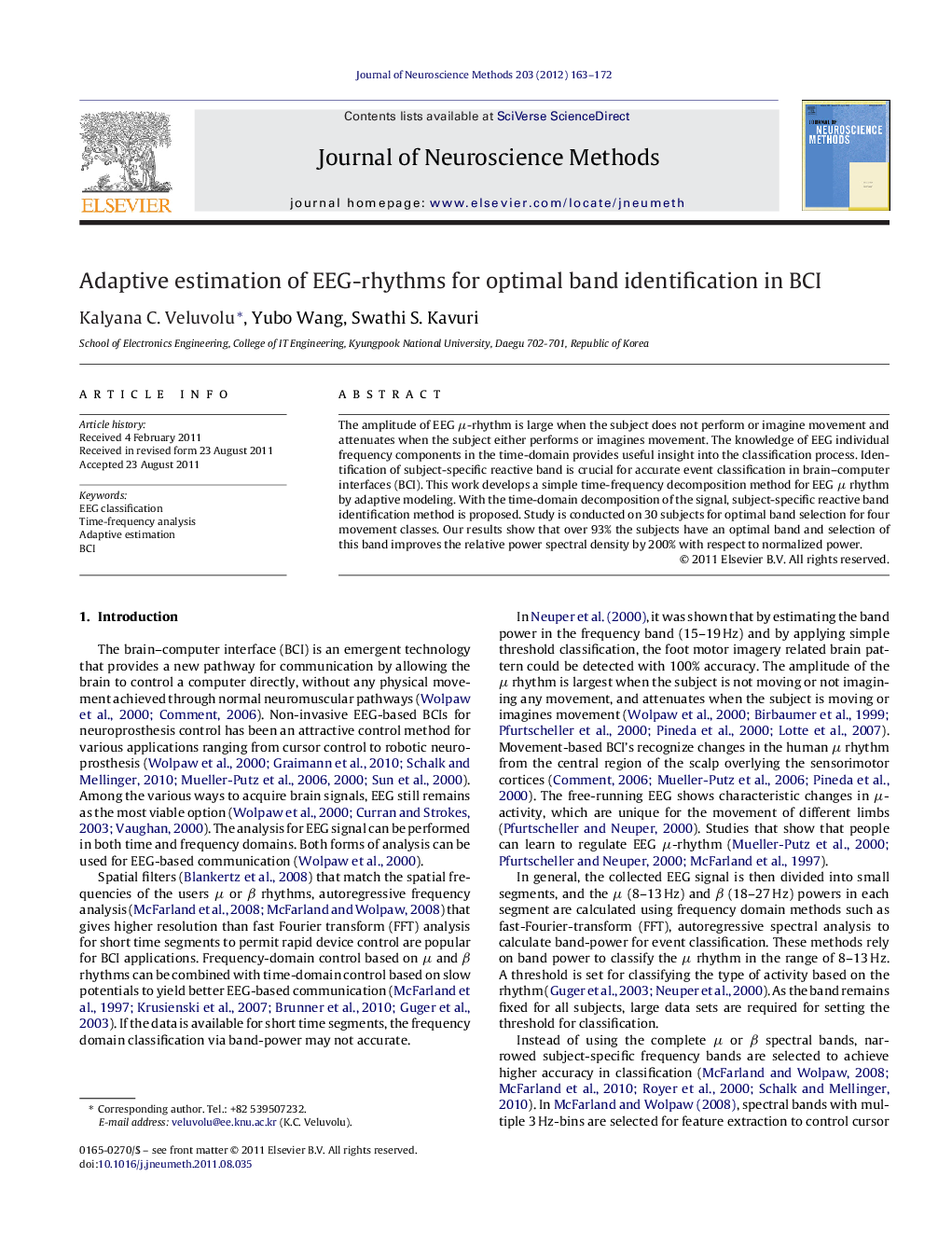| Article ID | Journal | Published Year | Pages | File Type |
|---|---|---|---|---|
| 6269211 | Journal of Neuroscience Methods | 2012 | 10 Pages |
The amplitude of EEG μ-rhythm is large when the subject does not perform or imagine movement and attenuates when the subject either performs or imagines movement. The knowledge of EEG individual frequency components in the time-domain provides useful insight into the classification process. Identification of subject-specific reactive band is crucial for accurate event classification in brain-computer interfaces (BCI). This work develops a simple time-frequency decomposition method for EEG μ rhythm by adaptive modeling. With the time-domain decomposition of the signal, subject-specific reactive band identification method is proposed. Study is conducted on 30 subjects for optimal band selection for four movement classes. Our results show that over 93% the subjects have an optimal band and selection of this band improves the relative power spectral density by 200% with respect to normalized power.
⺠This work develops a simple time-frequency decomposition method for EEG μ rhythm by adaptive modeling. ⺠With the time-domain decomposition of the signal, subject-specific reactive band identification method is developed in the paper. ⺠Study is conducted on 30 subjects for optimal band selection. ⺠Results show that over 93% the subjects have an optimal band and selection of this band improves the spectral power density difference by a minimum of 200%.
